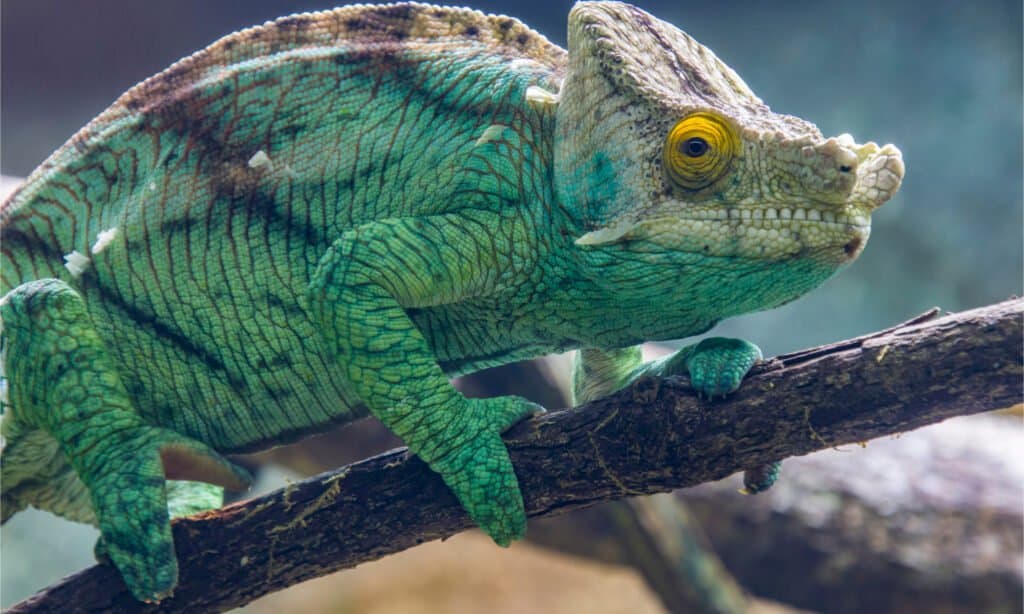Chameleons are known for being able to quickly change colors and adapt to their surroundings. Did you know these creatures are also incredibly defensive when approached by predators?
While these animals move quite slowly, they’re not one to give up when confronted. These critters sit silently and patiently wait for their prey to approach them before grabbing bugs with their long, slippery tongues to eat.
Moreover, they have mitten-shaped feet that enable them to securely grasp a limb or the ground. Chameleons have unusual eyes that can simultaneously perceive two separate items or objects. They can quickly identify possible predators and prey thanks to this skill.

The Parson’s chameleon (Calumma parsonii) is a large species of chameleon, a lizard in the family Chamaeleonidae. It is endemic to
Madagascar
.
©Danny Ye/Shutterstock.com
One of the many predators of these colorful creatures is snakes. Birds and monkeys are also known to enjoy the taste of a chameleon. A video on Tik Tok is gaining traction that shows an intense interaction between a green chameleon and a hungry boomslang snake.
A Fight for Life!
The central and southern parts of sub-Saharan Africa are home to the venomous Boomslang (Dispholidus typus), a species of snake that is exceptionally dangerous and venomous. This snake hunts throughout the day and is almost entirely arboreal.
It is quite nimble and can glide through tree limbs and climb treetops These snakes are more difficult to spot in their arboreal settings thanks to their coloration. If it weren’t for the chameleon’s unique vision, it may have been a goner.
The majority of colubrid snakes are non-venomous, making the boomslang one of the few venomous members of the Colubridae family. The boomslang’s short but lengthy rear fangs, which are placed beneath the eyes, are capable of injecting a potent hemotoxic venom.
Boomslangs may expand their jaws up to 170 degrees when striking since they have back fangs. While not in use, they have the ability to retract their fangs within their mouths.
The boomslang doesn’t take long to strike the chameleon and for a moment, viewers get the idea that the chameleon is toast. Gone are his days of blending into trees and eating tasty flies. But wait! He fights back not once, but twice!
At one point, the chameleon is standing there watching the snake closely. Will it strike again? Is this truly his last day on earth? Nope! Instead, the snake simply slithers off, leaving the chameleon to live another day.
A Quick Getaway
Although the chameleon did get away from the slithery serpent, that isn’t to say he’s left unscathed. These snakes are incredibly venomous and one bite can make animals and humans feel a variety of ailments.
Headaches, mental disruptions, sleepiness, and respiratory issues have been reported. In fact, not even the experts are safe from this snake! The day after a young boomslang nipped the thumb of Karl P. Schmidt, a renowned herpetologist from Chicago’s Lincoln Park Zoo, he was found dead.
He didn’t seek emergency medical attention after being bit because he thought the little snake couldn’t have injected a lethal dosage of venom. He had a serious brain hemorrhage and respiratory arrest, and the next day he passed away.
We have no word on how long the chameleon lived after the interaction or if it succumbed to the potentially deadly bite.
The photo featured at the top of this post is © Stu Porter/Shutterstock.com
Thank you for reading! Have some feedback for us? Contact the AZ Animals editorial team.






